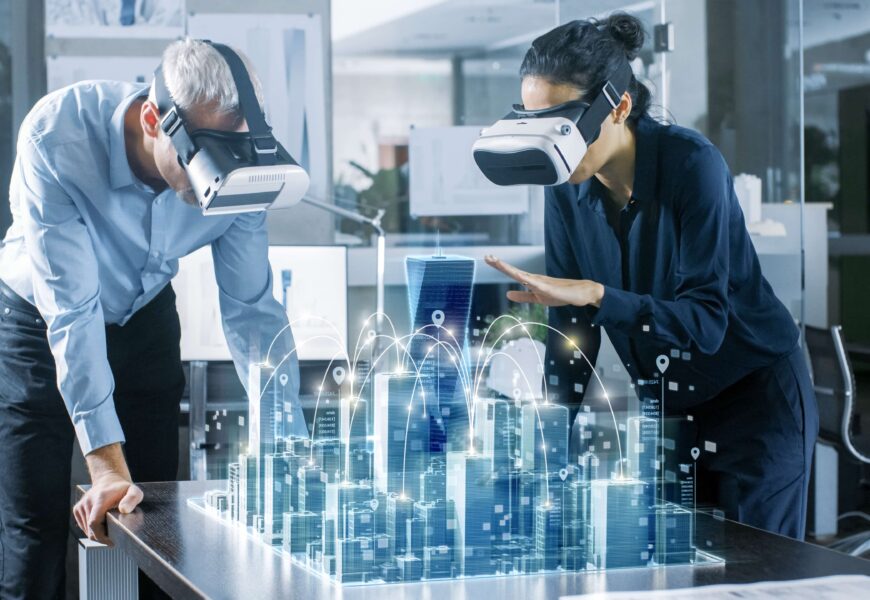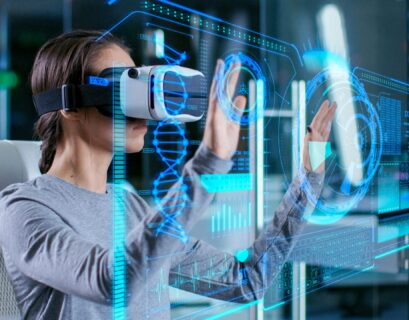Innovation has always been at the heart of human progress, driving new ideas and technologies that change how we live, work, and interact. Today, a wave of emerging technologies is transforming industries and redefining the future. These innovations hold the potential to reshape our world, offering new solutions to complex challenges and creating opportunities for growth. In this article, we will explore 10 emerging technologies that are poised to shape the future of innovation, from artificial intelligence to renewable energy, and how they will impact various sectors.
Emerging Technologies Future of Innovation
The future of innovation is closely tied to technological advancements that enable faster, smarter, and more sustainable solutions. Emerging technologies like AI, quantum computing, and blockchain are not only transforming existing industries but also creating new fields of study and business opportunities. These technologies are characterized by their ability to solve complex problems, improve efficiency, and open new possibilities for innovation. The pace at which these technologies are developing indicates that the future will be a dynamic era of rapid change, with far-reaching implications for every aspect of life.
Artificial Intelligence and Machine Learning
Artificial Intelligence (AI) and Machine Learning (ML) are at the forefront of technological innovation. These technologies enable computers to learn from data and make decisions without human intervention. AI is already transforming industries like healthcare, finance, and manufacturing by automating processes and providing insights through data analysis. Machine learning algorithms, particularly those used in predictive analytics, are helping businesses anticipate market trends, optimize supply chains, and improve customer experiences. As AI and ML continue to advance, they promise to make systems smarter and more adaptive, opening up new avenues for innovation.
Quantum Computing
Quantum computing is one of the most promising yet complex emerging technologies. Unlike classical computers, which use bits to process information, quantum computers use quantum bits (qubits) that can exist in multiple states simultaneously. This enables quantum computers to solve problems that are beyond the capabilities of traditional computing, such as simulating complex molecules for drug discovery or optimizing logistics networks. Though still in the early stages of development, quantum computing has the potential to revolutionize fields like cryptography, materials science, and artificial intelligence, making it a key player in the future of innovation.
Blockchain Beyond Cryptocurrency
While blockchain technology is best known for its role in powering cryptocurrencies like Bitcoin, its applications go far beyond digital currencies. Blockchain’s decentralized and tamper-proof nature makes it ideal for applications that require transparency and security, such as supply chain management, digital identity verification, and voting systems. By creating immutable records of transactions, blockchain can help eliminate fraud, reduce costs, and increase trust in digital processes. As businesses continue to explore the potential of blockchain, its role in innovation will expand to encompass various sectors, creating more efficient and secure systems.
5G Technology
The advent of 5G technology is set to revolutionize connectivity, offering faster internet speeds, lower latency, and more reliable communication networks. 5G enables real-time communication between devices, which is crucial for the growth of the Internet of Things (IoT) and autonomous systems. With 5G, industries like autonomous vehicles, remote healthcare, and smart cities can become more viable, providing unprecedented levels of interactivity and efficiency. The widespread adoption of 5G will not only enhance user experiences but also create new possibilities for innovation in areas like augmented reality, virtual reality, and cloud computing.
Augmented Reality (AR) and Virtual Reality (VR)
AR and VR technologies are transforming the way we experience digital content, merging the physical and virtual worlds. Augmented reality overlays digital information onto the physical environment, enhancing our perception of reality, while virtual reality immerses users in a completely virtual environment. These technologies are making significant inroads in industries like gaming, education, and training, providing immersive learning experiences and simulations. For businesses, AR and VR offer new ways to engage customers, visualize products, and provide remote assistance. As these technologies become more accessible, they will play a central role in shaping the future of digital experiences.
The Role of Robotics in Modern Innovation
Robotics is another area where innovation is rapidly advancing, with robots becoming more capable and versatile. Modern robots are used not only in manufacturing but also in healthcare, agriculture, and logistics. They can perform complex tasks such as surgical procedures, crop monitoring, and warehouse automation with precision. Advances in AI and machine learning have enabled robots to learn from their environments, adapt to new tasks, and interact safely with humans. The continued development of robotics is set to enhance productivity and efficiency, making them an integral part of the future workforce.
Biometric Authentication
As digital security becomes a growing concern, biometric authentication has emerged as a reliable method for verifying identities. Biometric technologies use unique physical characteristics such as fingerprints, facial recognition, and iris scans to provide secure access to systems and data. These technologies are already being used in smartphones, banking, and border control to enhance security and user convenience. The integration of biometrics with AI further improves the accuracy and speed of authentication, making it a valuable tool for businesses and governments looking to protect sensitive information and ensure secure access.
Edge Computing
Edge computing is a technology that brings computation closer to the source of data generation, reducing the need for data to travel long distances to centralized servers. This is particularly useful for applications that require real-time processing, such as autonomous vehicles, industrial automation, and IoT devices. By processing data at the edge of the network, edge computing reduces latency, enhances performance, and minimizes bandwidth usage. As the number of connected devices continues to grow, edge computing will become increasingly important in managing data more efficiently and enabling new innovations in the digital world.
The Rise of Autonomous Vehicles
Autonomous vehicles, including self-driving cars, trucks, and drones, are transforming the transportation industry. These vehicles use a combination of AI, sensors, and GPS technology to navigate and make decisions without human input. Autonomous vehicles have the potential to reduce traffic accidents, optimize fuel consumption, and improve logistics efficiency. While the technology is still developing and regulatory challenges remain, the progress being made in autonomous driving is paving the way for safer and more efficient transportation systems. As these vehicles become more widespread, they will significantly impact urban planning, logistics, and mobility.
Internet of Things (IoT) Evolution
The Internet of Things (IoT) refers to the network of interconnected devices that collect and exchange data. From smart home appliances to industrial sensors, IoT devices are creating new ways to monitor and control environments. The evolution of IoT is leading to the development of smart cities, where sensors monitor everything from traffic patterns to energy usage, improving urban efficiency. In industries like agriculture, IoT enables precision farming, allowing farmers to monitor soil conditions, weather, and crop health. The growing integration of IoT with AI and 5G will continue to expand its capabilities, making it a cornerstone of future innovation.
Renewable Energy Technologies
As the world faces the challenges of climate change and energy scarcity, renewable energy technologies are becoming increasingly important. Innovations in solar, wind, and hydroelectric power are making renewable energy more efficient and affordable. Technologies like energy storage systems and smart grids are enabling better management of renewable energy sources, ensuring that power is available when it is needed most. The shift towards renewable energy is not only reducing carbon emissions but also creating opportunities for economic growth through green technology development. These advancements are crucial for building a sustainable future and addressing the global demand for clean energy.
Conclusion
The future of innovation is being shaped by a diverse range of emerging technologies that have the potential to transform our world. From the power of AI and the promise of quantum computing to the connectivity of 5G and the security of blockchain, these technologies are paving the way for a smarter, more efficient, and more connected future. As businesses and individuals embrace these innovations, the opportunities for growth and positive change are limitless. By staying at the forefront of these technological trends, we can prepare for a future where technology continues to push the boundaries of what is possible.











